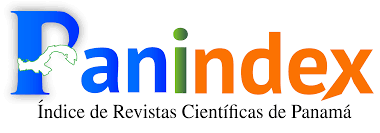
This work is licensed under a Creative Commons Attribution-NonCommercial-ShareAlike 4.0 International License.
Esta obra está bajo licencia internacional https://creativecommons.org/licenses/by-nc-sa/4.0/deed.es
La revista (y sus contenidos) emplean las licencias Creative Commons, específicamente la del tipo CC BY NC SA 4.0, la cual establece que “el beneficiario de la licencia tiene el derecho de copiar, distribuir, exhibir y representar la obra y hacer obras derivadas siempre y cuando reconozca y cite la obra de la forma especificada por el autor o el licenciante”. La licencia del tipo CC BY NC SA 4.0 contempla tres categorías,
- Atribución.
- No Comercialización de la obra.
- Compartir igual
Los lectores son libres de:
- Compartir — copiar y redistribuir el material en cualquier medio o formato
- Adaptar — remezclar, transformar y construir a partir del materialLa licenciante no puede revocar estas libertades en tanto usted siga los términos de la licencia
- Siempre y cuando se respeten y contemplen la atribución de autoría y la no comercialización del material.
Abstract
Whether a candidate is taking a "high stakes" test such as the TOEFL or a "low stakes" test such as an end-of-level test, the repercussions of a wrong score always have a significant impact. That's why high-stake tests are constantly subjected to validation processes, while their low-stakes counterparts rarely are. This research has focused its attention on an EFL program of a Panamanian institution with the objective of determining the validity of the tests used, which are considered to be "low" stakes. The type of research carried out is applied, descriptive, mixed, non-experimental, and transversal. The following types of validity were evaluated: validity based on the context, validity based on the theory, reliability of test results, and characteristics of the candidates. The institutional tests of the EFL courses of a Panamanian institution were studied. In this institution, most of the teachers use the Schoology LMS platform to administer their end-of-course exams. A sample was taken in June 2018 that contained the record of the final tests of levels 1, 2, 3, 4, 5, 6, 7, 9, 11, 12, 13, and 15; since only the teachers of these levels used the platform in that period. The sample contained a total of 340 administrations. Important deficiencies were found in regards to context-based validity and score reliability, while the results of the evaluation of theory-based validity and the characteristics of the candidates were rather positive. A series of recommendations were provided, among which are the creation of institutional oral tests, the inclusion of a section to evaluate listening comprehension, and the application of greater reliability studies, among others.
Keywords:
References
American Educational Research Association, American Psychological Association, and National Council on Measurement in Education (1974, 1985, 1999). Standards for Educational and Psychological Testing. Washington, DC: Author.
Anastasi, A. (1988). Psychological Testing (6th edition). New York: Macmillan.
Bachman, L.F. (1990). Fundamental Considerations in Language Testing. Oxford: Oxford University Press.
Bachman, L. and Palmer, A. (1996). Language Testing in Practice. Oxford: Oxford University Press.
Brown, J. D. (1996). Testing in language programs. Upper Saddle River, NJ: Prentice Hall Regents.
Chapelle C., Jamieson J. y Hegelheimer V. (2003); Validation of a web-based EFL test
Kokhan K.(2013); An argument against using standardized test scores for placement of international undergraduate students in (ESL) courses.
Kuder, G.F. y Richardson, M.W. Psychometrika (1937) The theory of the estimation of test reliability 2: 151. https://doi-org.echo.louisville.edu/10.1007/BF02288391
O’Sullivan, B. (2000). Towards a Model of Performance in Oral Language Testing. Unpublished PhD Dissertation. University of Reading.
Pennington, D. (2003). Essential Personality. Arnold. p. 37. ISBN 0-340-76118-0.
Weir, C. (2005); Language Testing and Validation: An Evidence-Based Approach. Springer

















